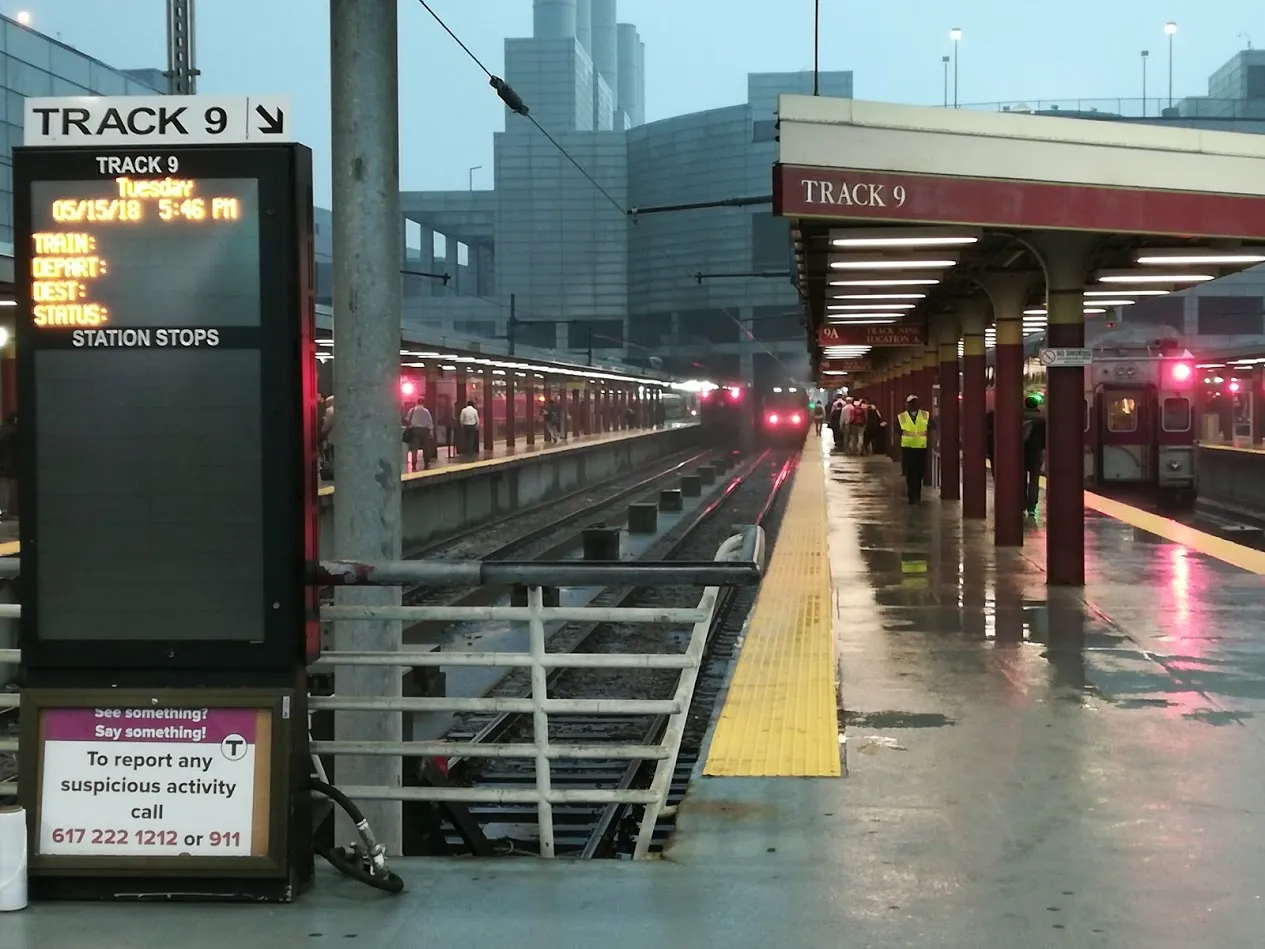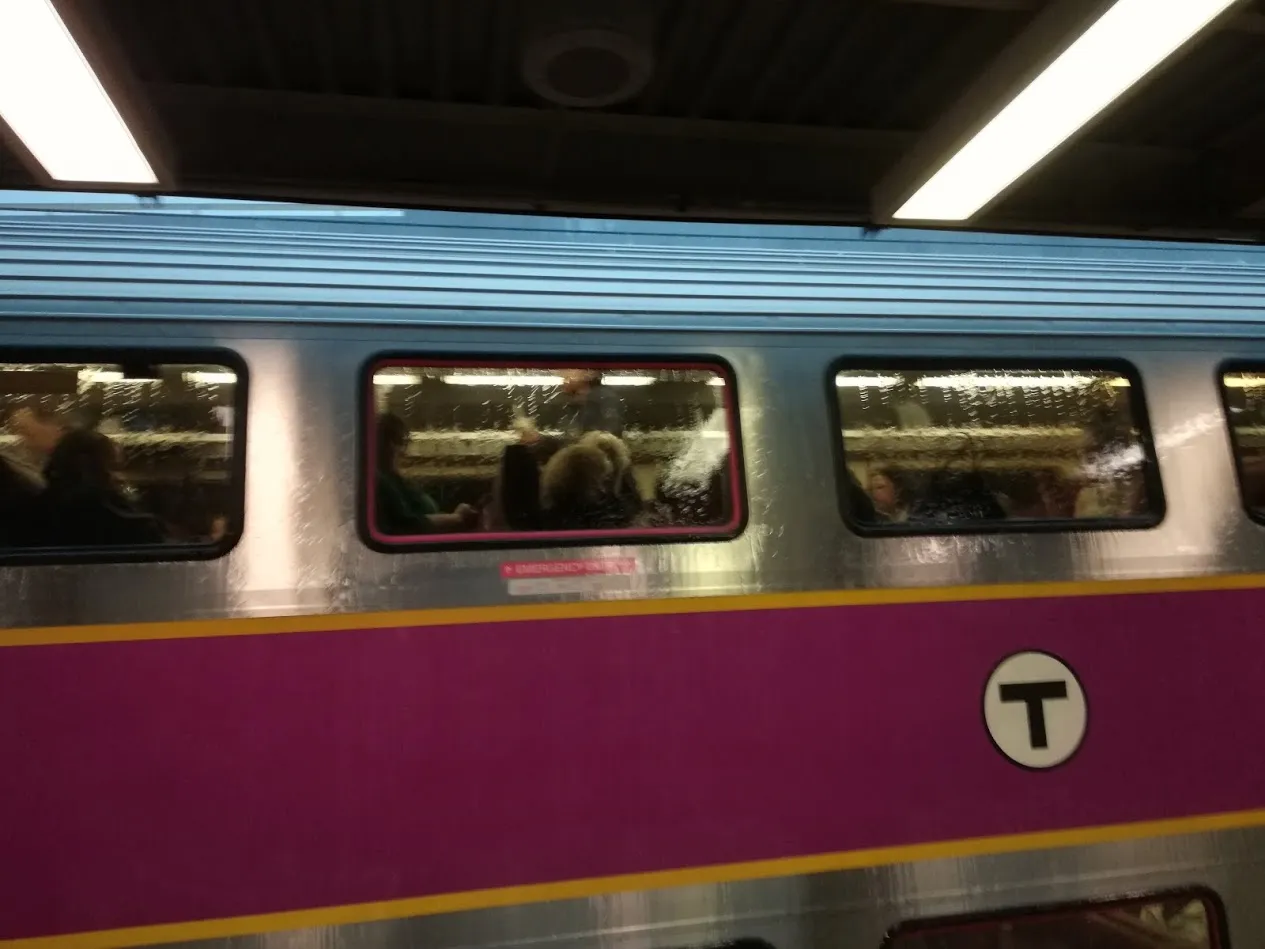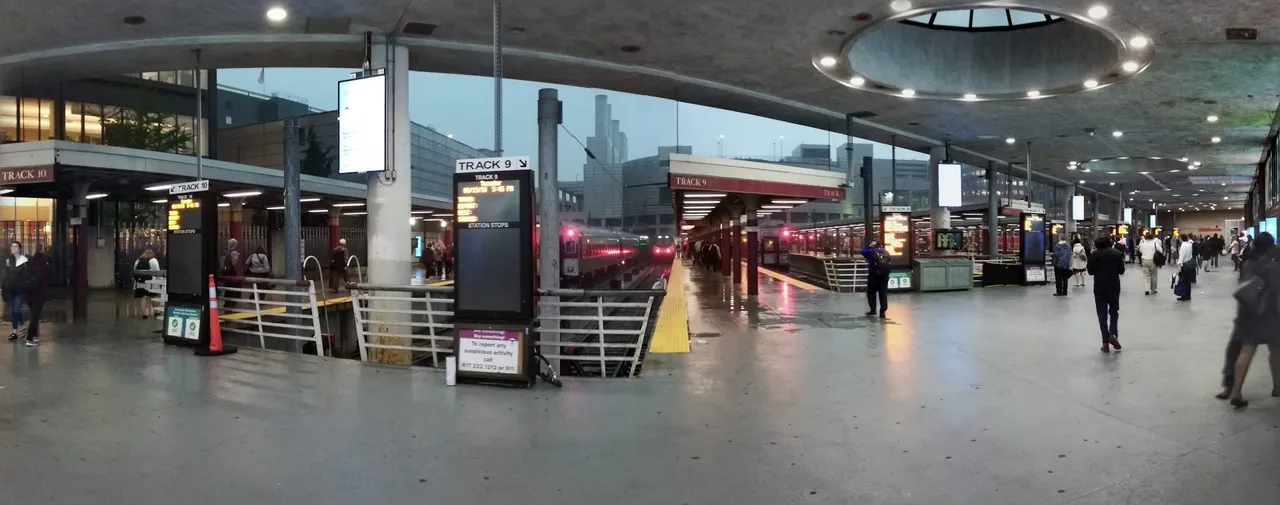Last Tuesday, a line of freakishly intense thunderstorms marched across the state in the late afternoon / early evening. They were so well defined that forecasters were predicting to the minute when they would reach the city: at 5:24 PM.
I was able to leave work a few minutes early and jog the one block to a subway stop before the downpour began. No way was I going to walk the usual mile to the train station with that kind of weather coming. (Plus, my monthly train pass includes unlimited MBTA subway usage anyway. For $365, it ought to!)
Of course, everyone making their way home through rush hour had the same idea. The train-cars were packed sardine tight again, with people watching their knees and elbows as they pressed in tighter and tighter.
I'm always impressed by how well a large group of complete strangers manages to accommodate one another in this situation. The usual stone-faced subway expressions give way to laughter and camaraderie as we're all suddenly in intimate contact with one another.
There's also a humorous subtext to the conversations that go on. "Do you have enough room in your seat there?" [Are you all right with my ass in your face if I promise not to fart?] "Could you move your bag a few inches that way?" [It's crushing my nuts.] "Excuse me, my apologies." [I may have just squished your boob with my shoulder but I promise I didn't enjoy it.]
Left to themselves, a tremendous amount of people can get along just fine.
None of that is what's creepy about this particular day.
Once I emerged into South Station the storm was in full force. It felt more like midnight than six in the afternoon. I stepped out to the platforms and used my cell-phone camera to catch a few pictures of the dramatic lighting. With the glossy, rain-slick concrete and the cheery train lights, the mood was an odd combination of festive and apocalyptic.

The rain was pouring in sheets down the sides of the cars. Moving from the platform to the train was like stepping through a solid curtain of water.

Anyway, here's the creepy thing.
Five days later, I got a notification on my phone that "Google Assistant" had my panorama photo ready.
That sounded lovely.
Google had taken several of the snapshots I took that night and stitched them together into a dramatic 180 degree panorama of the platforms. It did a great job, actually. (You can right-click the image to view it full size in a new tab.)

I was rather impressed by this. But then I started to consider what it meant. This "Google Assistant," in its own sweet time, had taken the liberty of going through all of my pictures, whereupon an algorithm noticed that several of them could be stitched together into one seamless image. Cool I guess, but why are Google programmers directing their servers to go through our stuff like this?
The panorama was an impressive technical feat. It wasn't like I'd stood in one place and carefully lined the pictures up or anything. I'd zoomed in and out and moved around on my way to my own platform and waiting train. The people in the images had likely moved dozens if not hundreds of feet between the taking of one picture and the next.
And yet, other than the curved perspective to the final piece, there's no obvious clue that it had been stitched together from several pictures.
I decided to click on the "Assistant" button and see what else it had decided to do for me.
Albums sorted by faces.
This is where it got really creepy.
The program displayed a thumbnail gallery of all the people I've photographed more than once. Just the faces. It was like my friends and family had been condensed into a series of Dungeons & Dragons character sketches. Or mugshots.
And while the thumbnails are all perfectly cropped to well-composed facial close-ups, clicking one brings up every picture that person appear in, no matter how insignificant their role in that photo is. They might be in the background, or in a crowd, or turned so that just a quarter of the face is visible.
My boss and my co-workers are in there, and the members of my pipe-smoking club (where I am now the official photographer), and myself and my family members. Several of the pictures were taken with old cell phones several years ago!
Now I can say, "OK Google, show me every picture I've ever taken with my sister in it, and tell me where we were," and the information is at my fingertips.
So now we know the algorithm has been sorting through pictures we've stored in the cloud, behind our carefully selected, strong passwords. It's grouped people together by time and place with the location data from cell phone towers, wifi signals, and GPS.
What if anyone ever guesses my password? What if there's a security breach at Google? That's a lot of information to hand over to an identity thief, or a stalker... or the government.
When Edward Snowden revealed that this sort of thing was going on, people were outraged. Well, some people were outraged, and the rest just said, "What, me worry? It's not like I'm doing anything wrong." The outrageousness of this state of affairs has faded into the background, and now the Google Assistant comes forward to say, "Hey, look at this nifty thing I've done for you. Isn't it fun that we've collected all this data?"
Google even had the nerve to ask me to type in names to go with the faces! "Want to identify this person?" Like the algorithm can't figure out who these people are on its own!
It's not like we didn't know this level of information gathering was going on. It's so pervasive and commonplace now that for most of us, it's easier not to think about it, because what'cha gonna do? Between the train and the subway and the city streets, my movements are already being tracked whether I've got a phone in my pocket or not.
But it is an odd little shock to be confronted with how much is going on with your data, by having it served up and presented to you as a feature. This might seem like a ballsy move by Google, but I'd bet that 90%, if not more, of Android users who stumble on this function say, "Awesome! It's organizing my pictures for me!"
How do you feel about this technology?
Is this sort of thing a benefit, or a trap?
I'd be tempted to power down my phone or put it into airplane mode, but that rather defeats its purpose as a communication device, doesn't it?
And it does take really nice pictures.
